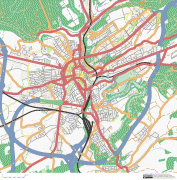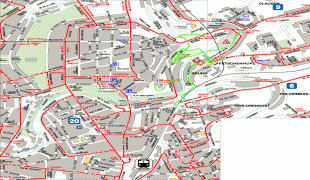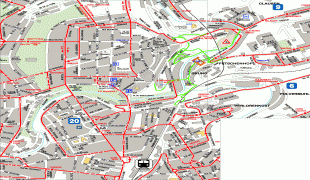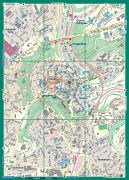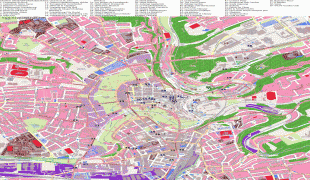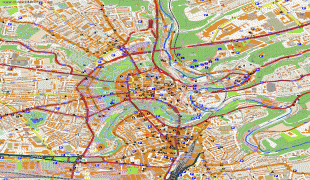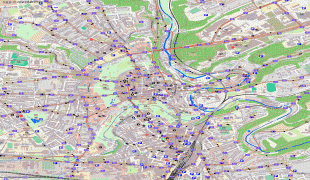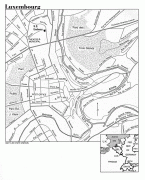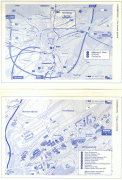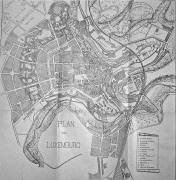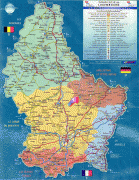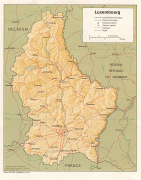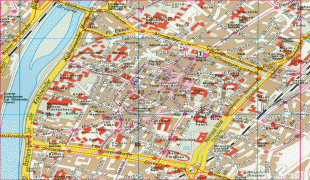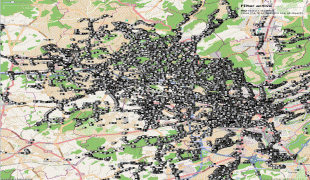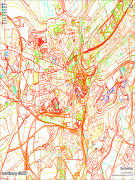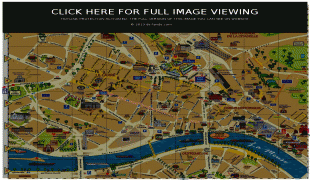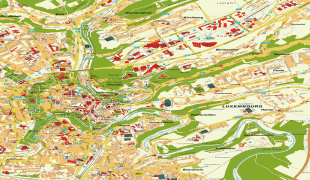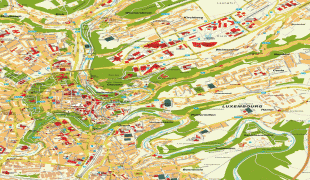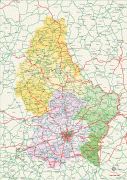Luxembourg (Luxembourg)
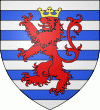 |
, Luxembourg City has a population of 128,514 inhabitants, which is more than three times the population of the country's second most populous commune (Esch-sur-Alzette). The city's population consists of 160 nationalities. Foreigners represent 70% of the city's population, whilst Luxembourgers represent 30% of the population; the number of foreign-born residents in the city rises steadily each year.
In 2022, Luxembourg was ranked as having the first-highest per capita GDP in the world at $137,950(PPP), with the city having developed into a banking and administrative centre. In the 2019 Mercer worldwide survey of 231 cities, Luxembourg was placed first for personal safety, while it was ranked 18th for quality of living.
Luxembourg is one of the de facto capitals of the European Union (alongside Brussels, Frankfurt and Strasbourg), as it is the seat of several institutions, agencies and bodies, including the Court of Justice of the European Union, the European Court of Auditors, the Secretariat of the European Parliament, the European Public Prosecutor's Office, the European Investment Bank, the European Investment Fund, the European Stability Mechanism, Eurostat, as well as other European Commission departments and services. The Council of the European Union meets in the city for three months annually.
In the Roman era, a fortified tower guarded the crossing of two Roman roads that met at the site of Luxembourg city. Through an exchange treaty with the abbey of Saint Maximin in Trier in 963, Siegfried I of the Ardennes, a close relative of King Louis II of France and Emperor Otto the Great, acquired the feudal lands of Luxembourg. Siegfried built his castle, named Lucilinburhuc ("small castle"), on the Bock Fiels ("rock"), mentioned for the first time in the aforementioned exchange treaty.
In 987, Archbishop Egbert of Trier consecrated five altars in the Church of the Redemption (today St. Michael's Church). At a Roman road intersection near the church, a marketplace appeared around which the city developed.
The city, because of its location and natural geography, has through history been a place of strategic military significance. The first fortifications were built as early as the 10th century. By the end of the 12th century, as the city expanded westward around the new St. Nicholas Church (today the Cathedral of Notre Dame), new walls were built that included an area of 5 ha. In about 1340, under the reign of John the Blind, new fortifications were built that stood until 1867.
In 1443, the Burgundians under Philip the Good conquered Luxembourg. Luxembourg became part of the Burgundian, and later Spanish and Austrian empires (See Spanish Netherlands and Spanish Road) and under those Habsburg administrations Luxembourg Castle was repeatedly strengthened so that by the 16th century, Luxembourg itself was one of the strongest fortifications in Europe. Subsequently, the Burgundians, the Spanish, the French, the Spanish again, the Austrians, the French again, and the Prussians conquered Luxembourg.
In the 17th century, the first casemates were built; initially, Spain built 23 km of tunnels, starting in 1644. These were then enlarged under French rule by Marshal Vauban, and augmented again under Austrian rule in the 1730s and 1740s.
During the French Revolutionary Wars, the city was occupied by France twice: once, briefly, in 1792–93, and, later, after a seven-month siege. Luxembourg held out for so long under the French siege that French politician and military engineer Lazare Carnot called Luxembourg "the best fortress in the world, except Gibraltar", giving rise to the city's nickname: the 'Gibraltar of the North'.
Map - Luxembourg (Luxembourg)
Map
Country - Luxembourg
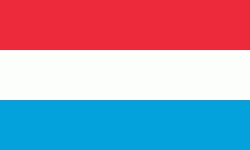 |
 |
| Flag of Luxembourg | |
With an area of 2,586 km2, Luxembourg is one of the smallest countries in Europe, and the smallest not considered a microstate. In 2022, it had a population of 645,397, which makes it one of the least-populated countries in Europe, albeit with the highest population growth rate; foreigners account for nearly half the population. Luxembourg is a representative democracy headed by a constitutional monarch, Grand Duke Henri, making it the world's only remaining sovereign grand duchy.
Currency / Language
| ISO | Currency | Symbol | Significant figures |
|---|---|---|---|
| EUR | Euro | € | 2 |
| ISO | Language |
|---|---|
| FR | French language |
| DE | German language |
| LB | Luxembourgish language |






